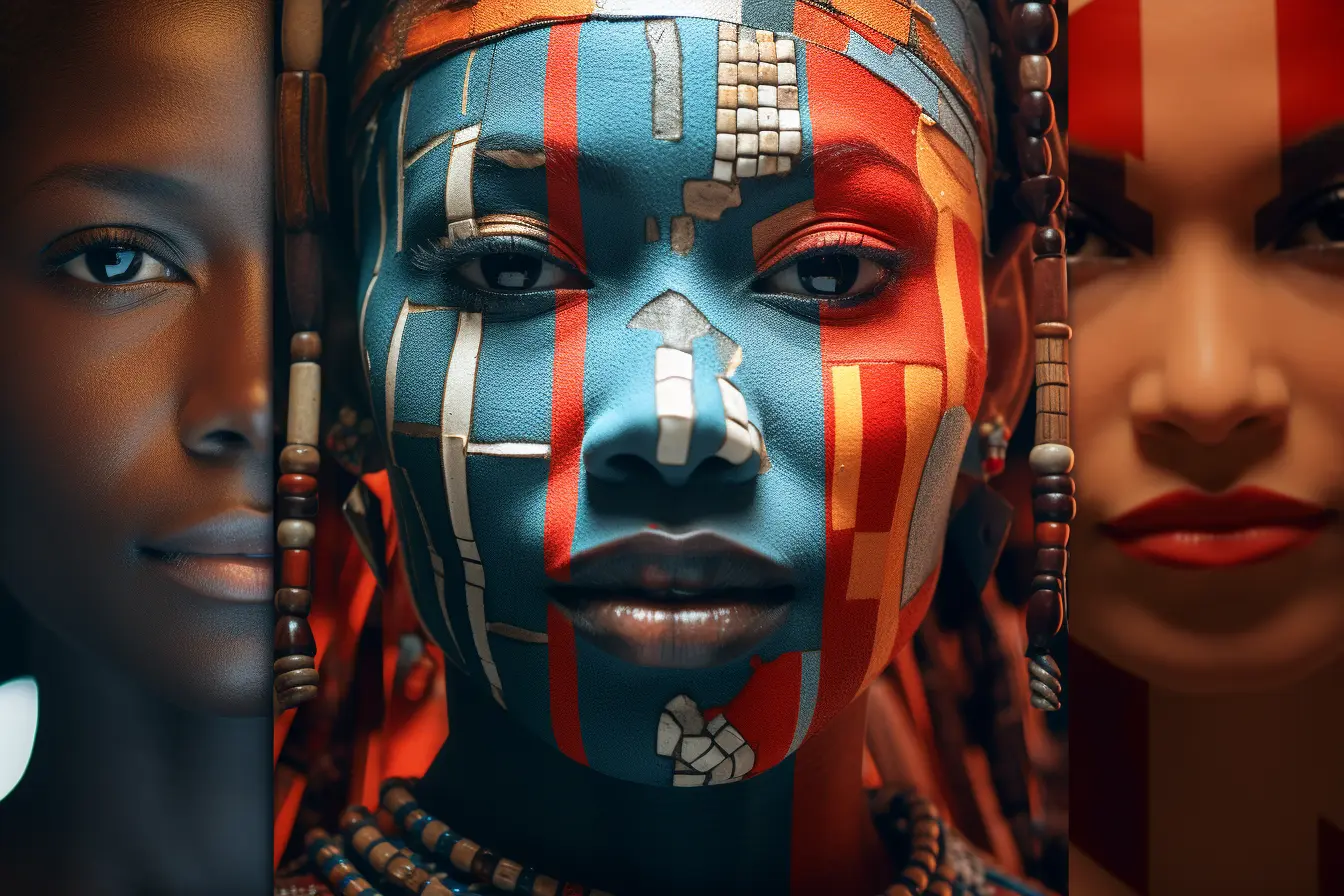Setting the Stage for a Global Conversation on Gender and Sexuality
Welcome to a journey that transcends borders and delves into the rich tapestry of human experience. You might be wondering, why is a conversation on gender and sexuality significant? The answer lies in its universal impact. Every culture, every country, and every individual deals with these topics, whether openly discussed or veiled in secrecy.
In this article, we’ll explore how different cultures navigate the realms of gender and sexuality. By understanding these various perspectives, we can better appreciate the richness of human diversity and the challenges that come with it. Let’s take this moment to broaden our horizons, shall we?
Why limit ourselves to a binary understanding of gender and sexuality when the world is teeming with diverse viewpoints? We’ll look into the Western perspective, probe Eastern philosophies, and take a tour around Africa, the Middle East, and Latin America. Intrigued yet?
So, fasten your seatbelts as we delve into a fascinating journey that goes “Beyond Binaries: Navigating Gender and Sexuality in Different Cultures.”
The Western Perspective: LGBTQ+ Rights and Intersectionality
The Western world has been at the forefront of LGBTQ+ rights, but it’s crucial to remember that the journey has been anything but smooth. From the Stonewall riots to marriage equality, the fight for recognition and rights has been ongoing. The Western perspective often views gender and sexuality through the lens of intersectionality, considering how various social categorizations like race, class, and gender intersect and create overlapping systems of disadvantage or privilege.
Take, for example, the transgender community. In Western societies, transgender people have gained some legal protections, but they still face numerous challenges, from workplace discrimination to limited access to healthcare. Now, factor in race, and the picture becomes even more complex. Transgender women of color are at a significantly higher risk of experiencing violence and discrimination.
Intersectionality isn’t just a buzzword; it’s an essential tool for understanding the complexities of the human experience. So, how does this Western perspective stack up against other cultural viewpoints? Let’s find out.
Eastern Philosophies: Gender Fluidity and Two-Spirits
When we venture into Eastern philosophies, we find a fascinating array of views on gender and sexuality. Consider the concept of “Hijra” in South Asia. Hijras are considered a “third gender,” neither entirely male nor female. They have a long history and are even mentioned in ancient texts like the Mahabharata. In some parts of India, Hijras hold a quasi-spiritual role and are often invited to bless newborns or newlyweds.
Similarly, Native American cultures recognize the existence of “Two-Spirit” individuals. The term “Two-Spirit” is a modern umbrella term used by some Indigenous North Americans to describe a traditional third, fourth, or even fifth gender role. These roles can vary widely among the many different Indigenous cultures.
It’s incredible to see how Eastern philosophies often incorporate a more fluid understanding of gender and sexuality. The acceptance level varies, of course, depending on the region and the prevailing social and religious norms. But one thing is certain: the East offers a rich tapestry of views that challenge the Western binary model.
African Views: The Ubuntu Philosophy and LGBTQ+ Rights
Africa is a continent rich in cultural diversity, languages, and philosophies. One idea that stands out is the concept of “Ubuntu,” a Nguni Bantu term meaning “humanity.” In the context of gender and sexuality, Ubuntu can be a double-edged sword. On the one hand, it emphasizes community and interconnectedness, which can foster acceptance. On the other, it can be used to enforce social norms, sometimes at the expense of LGBTQ+ individuals.
In some African cultures, there were traditionally roles for people who didn’t fit into the typical gender norms. However, the impact of colonialism, often carrying homophobic and transphobic attitudes, has significantly affected how gender and sexuality are viewed on the continent today. Activism for LGBTQ+ rights in Africa is ongoing but faces challenges, including punitive laws and social stigma.
Take Uganda, for instance. The country has some of the most stringent anti-LGBTQ+ laws, fueled partly by religious beliefs and partly by a form of nationalism that seeks to reject what are seen as “Western” values. Contrast this with South Africa, which was the fifth country in the world to legalize same-sex marriage and has anti-discrimination laws aimed at protecting LGBTQ+ individuals.
The African viewpoint, therefore, is not monolithic but rather a complex interplay of cultural, legal, and historical factors. Understanding this helps us appreciate the nuances and challenges involved in navigating gender and sexuality in different African cultures.
Middle Eastern Complexities: Religion and Cultural Taboos
The Middle East presents one of the most complex landscapes when it comes to gender and sexuality. Dominated largely by Islamic views, the region often carries stringent laws against homosexuality and non-binary gender expressions. However, it’s essential to distinguish between religious texts and cultural interpretations, as they can vary widely.
For instance, while Iran criminalizes homosexuality, it also allows gender transition surgery and has a surprisingly progressive transgender rights law compared to its stance on other LGBTQ+ issues. The situation contrasts sharply with countries like Saudi Arabia, where both homosexuality and gender transition are criminalized.
But even within this complex landscape, there are pockets of change. Activists, both online and offline, are challenging the status quo, advocating for greater rights and social acceptance for LGBTQ+ individuals. However, the journey is fraught with risks, including social ostracization and legal repercussions.
In the Middle East, the dialogue on gender and sexuality is very much a work in progress, influenced by a mix of religious beliefs, cultural norms, and emerging global perspectives.
Latin American Context: The Role of Machismo and Marianismo
Latin America offers another fascinating lens through which to explore gender and sexuality. The region is often characterized by the concept of “machismo,” a traditional form of masculinity, and its counterpart “marianismo,” the idealized feminine virtues of purity and moral strength. These norms have long influenced the region’s perspectives on gender roles and sexuality.
However, Latin America is also home to some progressive movements in LGBTQ+ rights. Argentina was the first country in Latin America to legalize same-sex marriage in 2010, and other countries like Uruguay and Colombia have followed suit. Despite this, the region still faces challenges, such as high rates of violence against transgender individuals.
These progressive policies and lingering challenges represent the dual nature of Latin America’s approach to gender and sexuality. While machismo and marianismo still hold sway, a younger generation is challenging these norms, aided by globalization and increased exposure to different viewpoints.
The Impact of Colonialism: Suppressing Indigenous Views on Gender and Sexuality
Colonialism has left an indelible mark on how different cultures view gender and sexuality. From Africa to the Americas, colonial powers often imposed their own norms and values, suppressing indigenous beliefs and practices. Take, for example, the criminalization of homosexuality in many former British colonies. These laws were not indigenous but were imposed by the colonial rulers and have had a lasting impact on LGBTQ+ rights.
In many Native American cultures, colonialism led to the suppression of Two-Spirit traditions. The colonizers’ religious and cultural beliefs did not allow for the fluid understanding of gender and sexuality that existed in these cultures. As a result, generations have grown up with a limited, binary perspective.
Understanding the role of colonialism is crucial for any meaningful discussion on gender and sexuality. It allows us to trace back current attitudes and laws to their historical roots and understand the challenges of changing deeply ingrained beliefs.
Intersectionality: The Overlapping of Culture, Gender, and Sexuality
We’ve mentioned intersectionality before, but it’s worth diving deeper into how this concept applies globally. Intersectionality helps us understand how various forms of social stratification, such as culture, gender, and sexuality, are interconnected. This framework is essential in understanding the unique challenges faced by individuals who belong to multiple marginalized groups.
For example, a gay man in the Middle East not only faces challenges due to his sexual orientation but also has to navigate the cultural and religious norms of his society. Similarly, a black lesbian woman in America faces both racial and sexual orientation-based discrimination.
Understanding the concept of intersectionality enables us to have a more nuanced view of the challenges and opportunities that come with navigating gender and sexuality in different cultural contexts. It reminds us that no issue exists in isolation; everything is interconnected.
Global Movements: How Activism is Changing Perspectives
Across the world, activists are fighting for change, pushing for more inclusive perspectives on gender and sexuality. From pride parades in major cities to online campaigns that reach remote areas, the global movement for LGBTQ+ rights is more robust than ever.
But activism isn’t just about protests and parades; it’s also about education and awareness. Organizations are working to change laws, yes, but they are also striving to change minds. The fight for acceptance and equality is not just legal; it’s deeply personal.
Social media has played a significant role in this global movement, allowing for the sharing of stories and ideas across cultural and geographical boundaries. This global network of activists and allies is helping to challenge traditional norms and create a more inclusive world.
Legal Landscape: How Laws Reflect and Shape Cultural Attitudes
Laws are both a reflection of societal values and a force that can shape them. From the decriminalization of homosexuality in India to the legalization of same-sex marriage in the United States, changes in the legal landscape have a profound impact on social attitudes.
However, laws can also be used to enforce traditional norms and beliefs. In countries where homosexuality or transgenderism is criminalized, the law serves as a tool to suppress diversity and maintain the status quo.
The relationship between law and culture is complex and varies from one region to another. But what is clear is that legal changes often serve as milestones in the larger journey towards social acceptance and equality.
The Importance of Education and Awareness
Education is a powerful tool for change. From comprehensive sex education that includes discussions on sexual orientation and gender identity to courses that explore the history and sociology of LGBTQ+ movements, education broadens our horizons and challenges our preconceived notions.
But education isn’t just about what we learn in school; it’s also about the media we consume, the conversations we have, and the experiences we share. Each of us has a role to play in educating ourselves and others, breaking down barriers, and fostering a more inclusive world.
The Journey Ahead in Understanding and Acceptance
As we’ve seen, navigating gender and sexuality is a complex journey that varies significantly from one culture to another. The challenges are many, but so are the opportunities for growth and understanding. By engaging in this global conversation, we can better appreciate the rich tapestry of human diversity and work towards a more inclusive future for all.
Thank you for joining us on this enlightening journey. As we continue to explore, question, and grow, let’s remember that the quest for understanding and acceptance is a path we all walk together.

